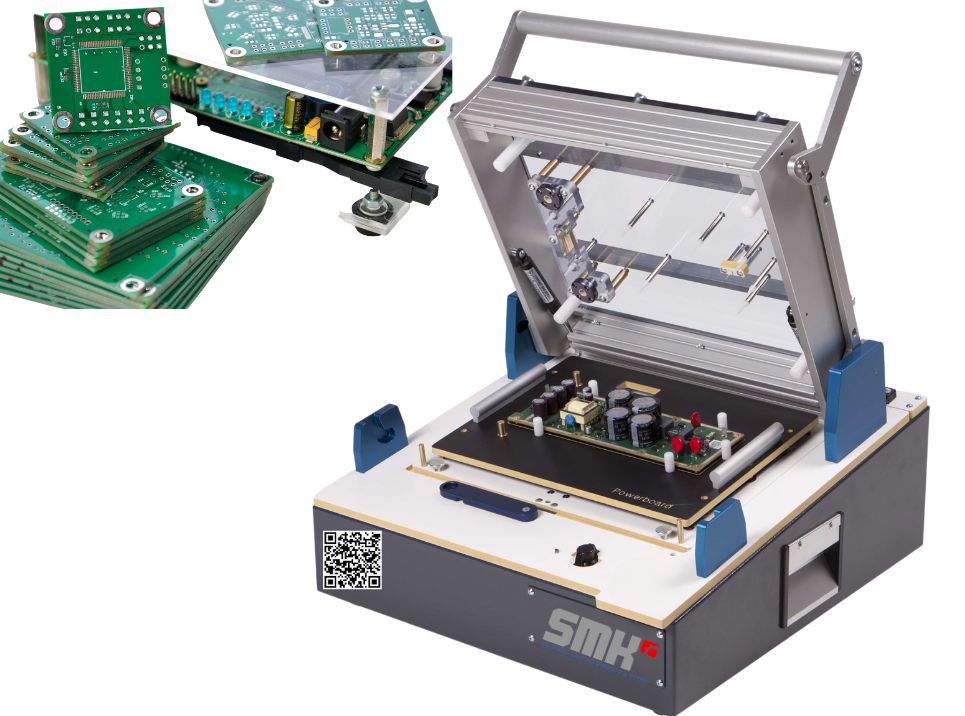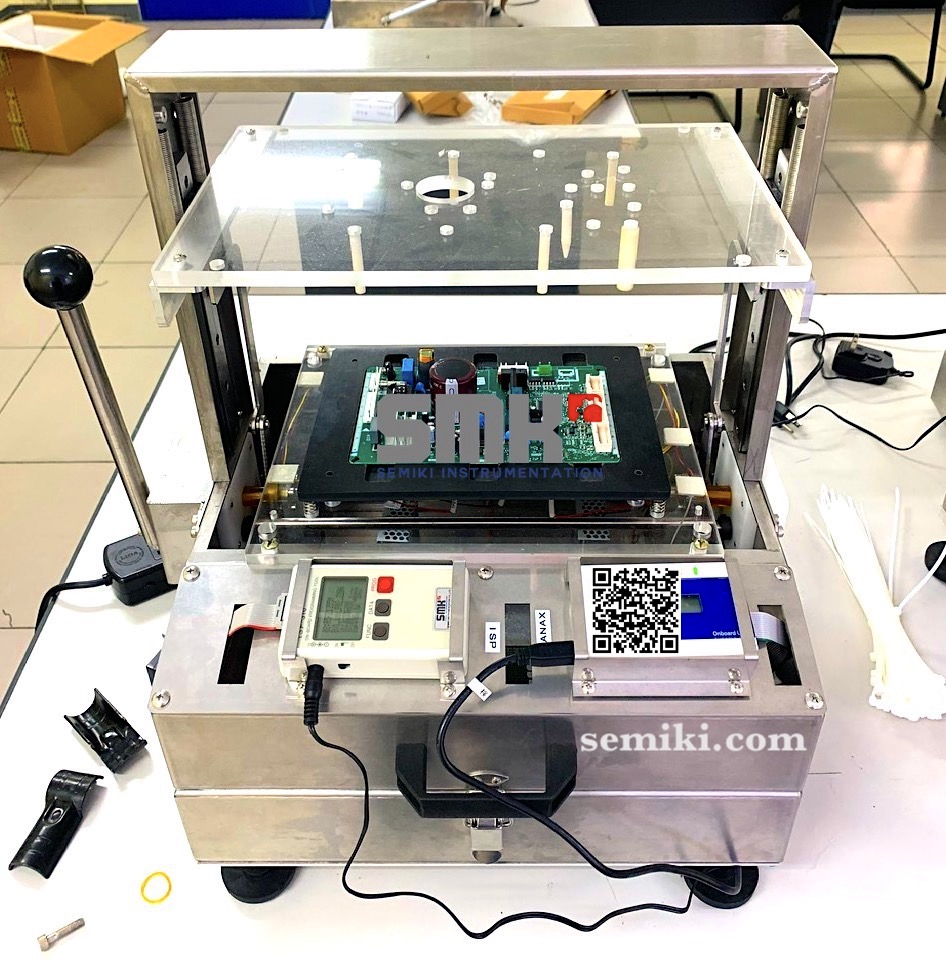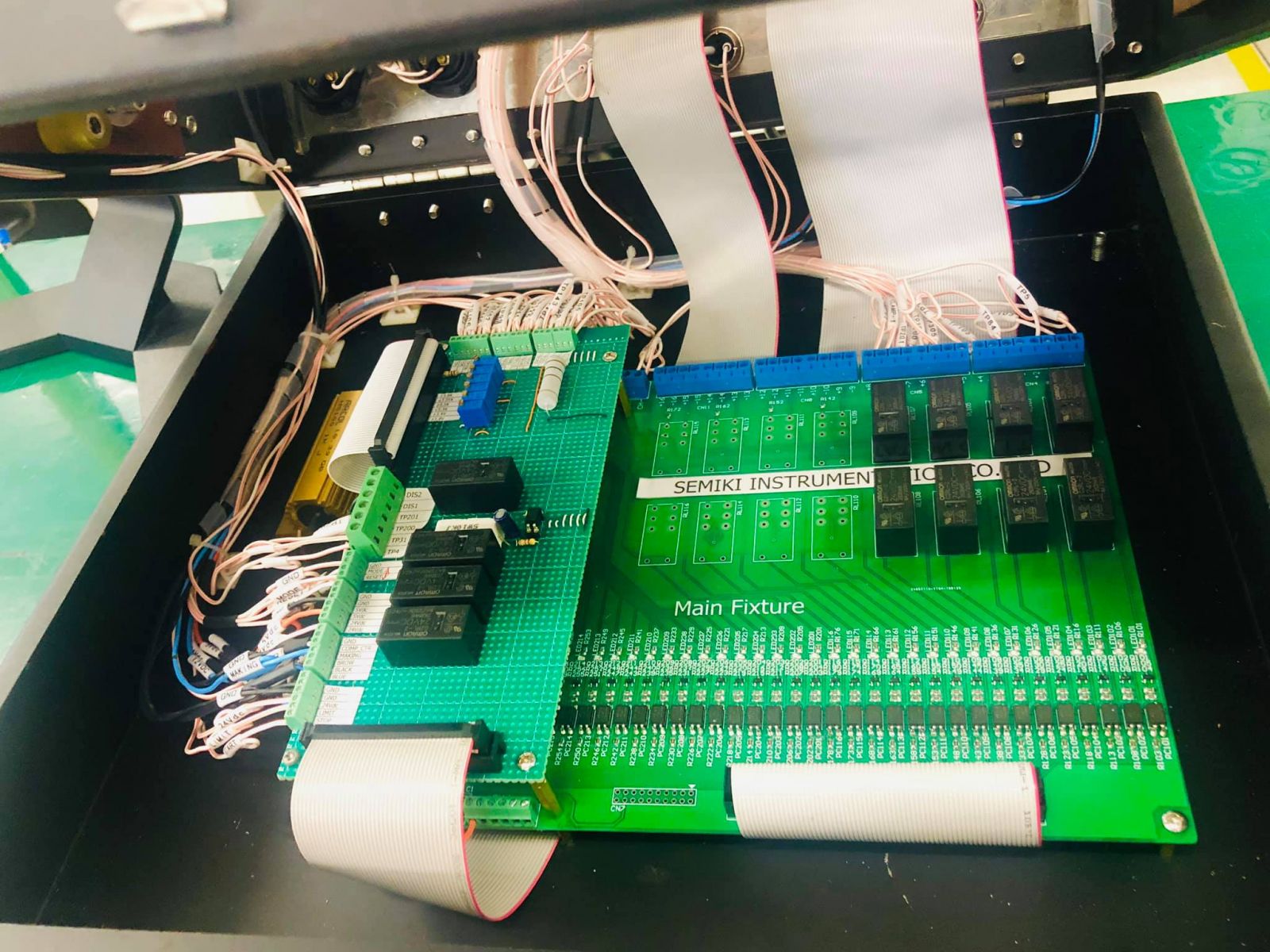SEMIKI オンボード フラッシュ プログラミング マシン。フラッシュ プログラミング ステーションを使用すると、機能テスト システムからフラッシュ プログラミングをオフロードできるため、資本利用率を向上させながらテストのスループットを向上できます。回路チェック フラッシュ プログラマ フィクスチャは、複数のプログラマ タイプと複数の I/O 構成をサポートします。
SEMIKI オンボード フラッシュ プログラミング マシン (フィクスチャ付き) 製品は、設置面積が小さいターンキーのコンパクトな高性能自動プログラミング システムです。 Programmer は、低中量および低高ミックスの制作環境に最適です。

SEMIKI オンボードフラッシュプログラミングマシン
フラッシュ プログラミング ステーションを使用すると、機能テスト システムからフラッシュ プログラミングをオフロードできるため、資本利用率を向上させながらテストのスループットを向上させることができます。回路チェック フラッシュ プログラマ フィクスチャは、複数のプログラマ タイプと複数の I/O 構成をサポートします。
の SEMIKI オンボードフラッシュプログラミングマシン 治具付き製品は、設置面積が小さく、すぐに使用できるコンパクトな高性能自動プログラミング システムです。 Programmer は、低中量および低高ミックスの制作環境に最適です。
ICプログラミングとは何ですか?
プログラマブル IC はそのままでは機能しませんが、その動作と機能を定義するにはファームウェアまたは構成データを使用してプログラムする必要があります。たとえば、工場から出荷されたマイコン IC は白紙の状態です。ユーザーは、プログラマ ツールを使用してコンパイルされたマシン コード プログラムをロードし、目的のタスクを実行する必要があります。
プログラマブル IC の主なタイプ:
マイクロコントローラー – ほとんどの電子機器や電化製品に使用されています。埋め込みファームウェアコードでプログラムされています。
FPGA - フィールド・プログラマブル・ゲート・アレイ。ハードウェア動作設計ファイルを使用して構成されます。
CPLD – 複雑なプログラマブル ロジック デバイス。論理方程式を使用してプログラムされています。
フラッシュメモリー – ファームウェア コードを保存します。再プログラム可能。
EEPROM – データがプログラムされた不揮発性メモリ。
適切な IC プログラミングがなければ、このようなデバイスは機能しません。したがって、プログラミングは、プログラマブル IC を製品に導入する前に不可欠なステップです。

テレビメインボード
なぜICプログラミングが必要なのでしょうか?
IC および PCB の組み立てプロセスにおいてプログラミングが不可欠なステップである主な理由を以下に示します。
起動する – IC を起動して機能を開始するには、初期プログラムをロードする必要があります。
機能を定義する – プログラムコードは IC の動作を決定します。たとえば、プログラムされたファームウェアに基づいて、モーター制御アルゴリズムやワイヤレス プロトコル スタックを実行するようにマイクロコントローラーを作成できます。
設定を構成する – プログラミングは、ID、ボーレート、アドレス、暗号化キーなどのパラメータを設定するために使用されます。
適応性 – プログラムを現場で更新して、新しい機能を追加したり、機能を変更したりできます。
知的財産保護 – プログラム コードをチップ製造から分離しておくと、設計者の知的財産が保護されます。
在庫 – 1 つの汎用 IC を、在庫からのさまざまな顧客注文に応じてさまざまな方法でプログラムできます。
最終ライン生産 – IC は、完成したボードを出荷する前の最後のステップとしてプログラムされます。
プログラミングがなければ、IC は機能しないブランクになります。プログラミングにより、意図した動作と機能を備えたチップが実現されます。

株式会社フォーコム共栄と呼ばれるオンボード Flash プログラマを提供します。 ISP-310は、Toshiba TX03 Arm Core ベースのマイクロコントローラ シリーズなど、さまざまなフラッシュ マイクロコントローラをサポートします。
SEMIKIオンボードプログラミングの利点
オンボード プログラミングの最も重要な利点の 1 つは、設計および製造エンジニアが IC のテストとプログラミングを 1 つの製造プロセスに統合できることです。これにより、デバイスを表面実装する前に IC のオフボード プログラミングを実行する必要がなくなります。


高品質の試験治具
DUT は、完全に直線的にテスト環境に接続されたスプリング コンタクト ピンに接続されます。
DUT とプローブの接続は、上面と底面の両方から行うことができ、オプションで側面からも行うことができます。
人間工学に基づいたハウジングは、追加の測定電子機器を収納するための十分なスペースを提供します。ハウジングの背面と底面は、さまざまなテスト システム インターフェイスに適合させることができます。」
プログラミング テスト フィクスチャは、カスタム ソケット アセンブリとアダプタ ボードで構成されます。
ソケット アセンブリは、圧縮を提供するヒンジ付きの調整可能なクリップオン蓋を使用して、圧縮可能な接点のアレイ上の定位置に DUT を正確に固定する機械要素を提供します。
アダプター ボードは、DUT 上の選択されたピンを外部プログラミング ハードウェアに配線します。
追加のカスタム統合には、ソケット本体または蓋の熱管理、PCB の上面/背面の電源端子ブロック、PCB 設計の一部としてのコンデンサおよびその他のディスクリート コンポーネント、ベンチトップでの使用およびケーブル管理のために PCB をベースボードに取り付ける機能などが含まれます。 。
メンテナンスと校正:
► 一定期間ご使用後は、弊社購入店にて再メンテナンスをお願い致します。 ベトナム現地:SEMIKI CORP

配布元:
セミキ計装株式会社
電子メール: sales@semiki.com
オフィス電話: +84 28 2253 3522
~あなたのために最善を尽くします~